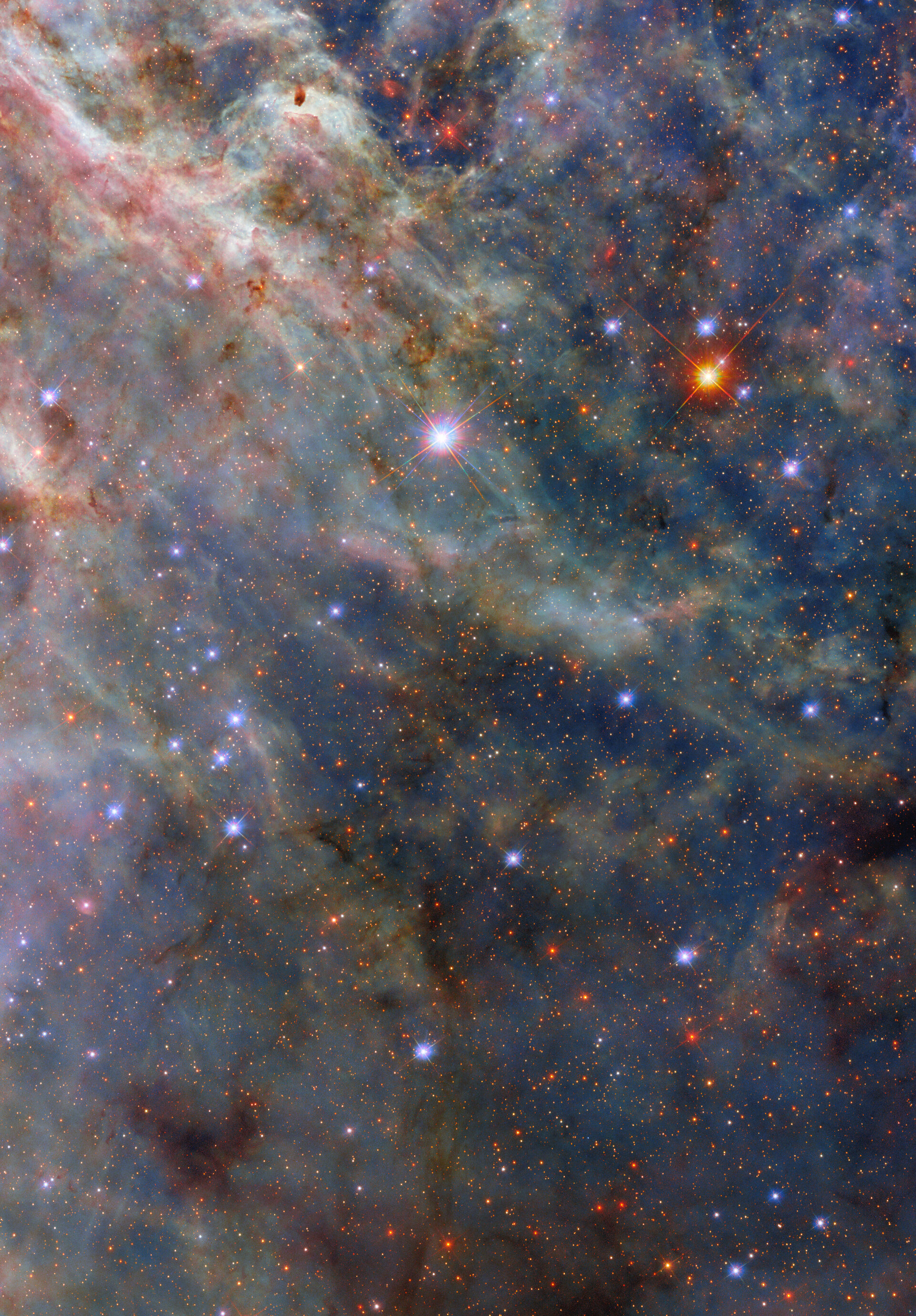
Recently, the Hubble Space Telescope caught this stunning image of the Tarantula nebula, the largest and brightest stellar factory in the Large Magellanic Cloud — a dwarf galaxy orbiting our own.
What is it?
The Tarantula nebula is home to some of the largest known stars, boasting masses up to 200 times that of our sun.
The Hubble Space Telescope captured a scene on the nebula's fringes where the super star cluster R136 resides. Near R136 lives a rare type of stars known as Wolf-Rayet stars. These massive stars have shed their hydrogen envelopes and unleash fierce stellar winds, influencing their dusty surroundings.
Where is it?
The Tarantula nebula lives approximately 160,000 light-years away in the Large Magellanic Cloud, in the constellations of Dorado and Mensa.

Why is it amazing?
To study the processes happening within the Tarantula nebula, astronomers used an observing program called Scylla, after the Greek monster, to study the clouds of dust and gas around the stars. The program works in tandem with another Hubble initiative known as ULLYSES (Ultraviolet Legacy Library of Young Stars as Essential Standards), which focuses on the giant young stars in both the Large and Small Magellanic Clouds.
Want to learn more?
You can read more about the Tarantula nebula and star formation.







